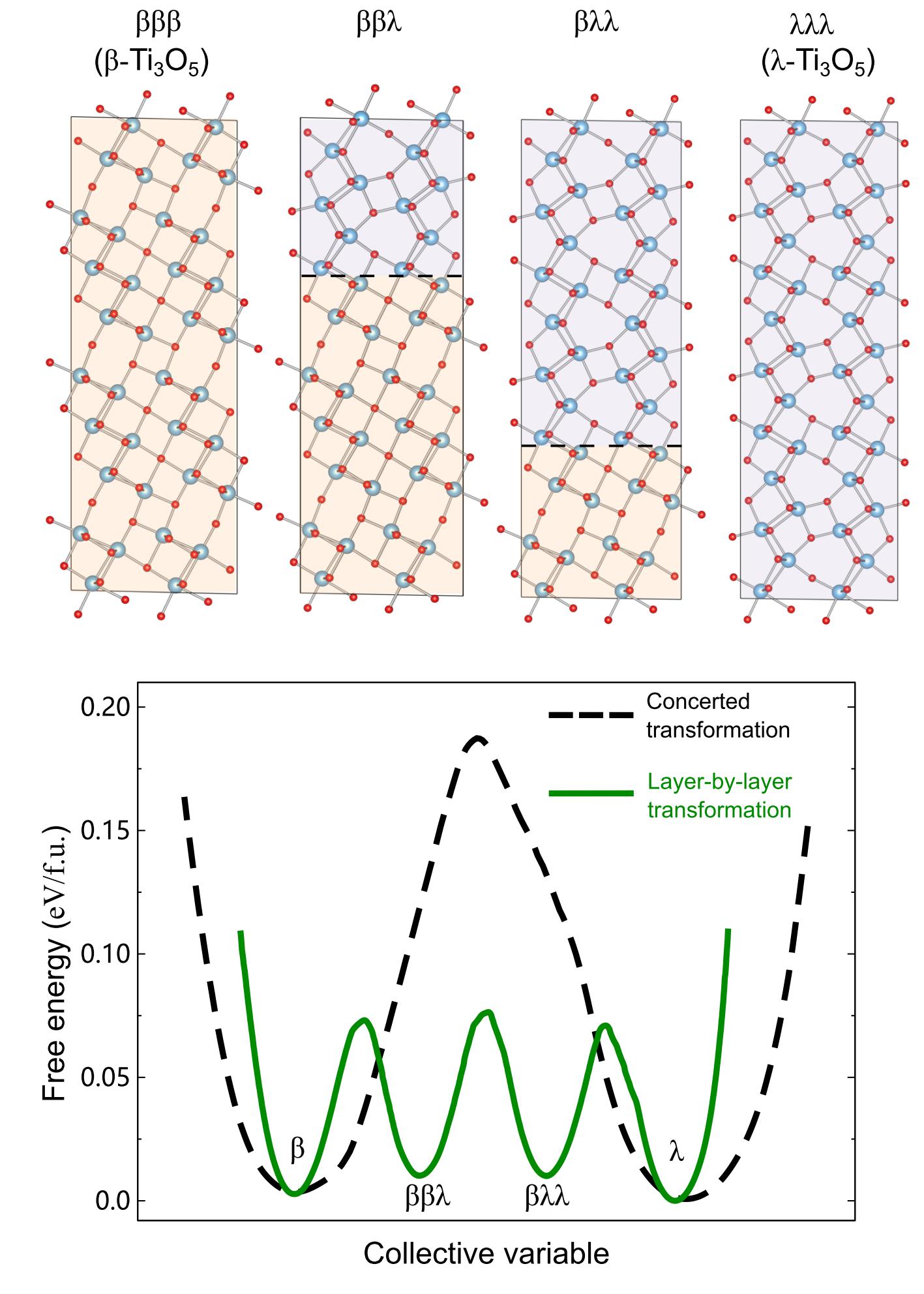The phase transformation from β- to λ-Ti3O5 is a first-order reconstructive solid-solid phase transition. However, it exhibits anomalous ultrafast and reversible kinetic characteristics. Despite extensive studies, the underlying microscopic mechanism remains unclear. Recently, the research team led by Prof. LIU Peitao from Institute of Metal Research, Chinese Academy of Sciences (IMR, CAS) discovered a kinetically favorable in-plane nucleated layer-by-layer transformation mechanism through machine-learning molecular dynamics simulations. This work was published in the Nature Communications.
In this work, they developed an accurate and efficient machine learning potential through a combined on-the-fly active learning and advanced sampling method. This allows to perform metadynamics simulations and large-scale molecular dynamics simulations with ab initio accuracy. They unveiled that the phase transition undergoes an interesting in-plane nucleated layer-by-layer kinetic transformation pathway. Specifically, the in-plane intra-cell atomic movements are favorable, resulting in two-dimensional nuclei. Then, the phase transformation propagates to the neighboring layers via intermediate metastable crystalline phases. Interestingly, they predicted that the superlattices consisting of any combination of β-like and λ-like building blocks along the c axis are all metastable phases without the presence of imaginary phonon modes. They found that the presence of intermediate layer-by-layer kinetic transformation pathways greatly reduces the free-energy barrier, thereby naturally explaining why an ultrafast and reversible phenomenon can appear in a reconstructive solid-solid phase transition.
This study was done in collaboration with researchers at Northwestern Polytechnical University, Northeastern University, and University of Vienna, and was supported by the National Natural Science Foundation of China, the National Key R& D Program of China, the Talent Program of the CAS, and Austrian Science Fund.

Layer-by-layer transformation significantly reduces the energy barrier (Image by IMR)